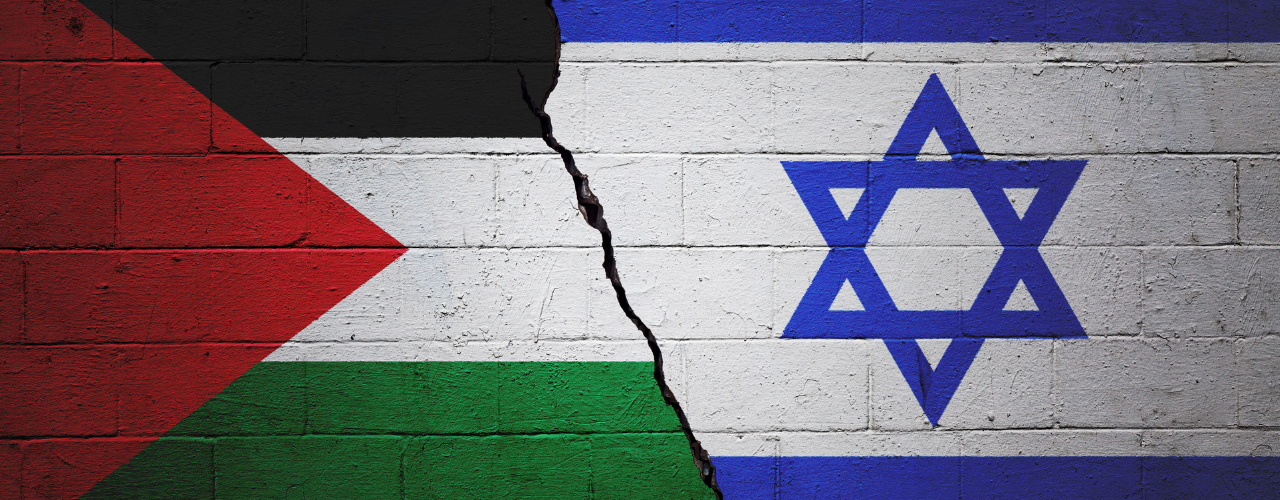
As we reach the end of Laudato Si’ week and reflect on its message, the wisdom that is asserted time and again in this encyclical “that everything is interconnected, and that genuine care for our own lives and our relationships with nature is inseparable from fraternity, justice and faithfulness to others” (LS70) offers new insights when examining events of today – specifically the Israel-Palestine conflict.
We cannot but acknowledge the suffering and the destruction that this conflict, and indeed any war causes. Francis is unequivocal in Laudato Si’ that “sin is manifest in all its destructive power in wars” (LS66) and that “war always does grave harm to the environment and to the cultural riches of peoples” (LS57). When we reflect on the interconnection between war and environmental and climate degradation, a few things that come to light. Firstly, disregard for human life can go hand-in-hand with disregard for the environment and loss of biodiversity. Pope Francis asserts that “the mindset which leaves no room for sincere concern for the environment is the same mindset which lacks concern for the inclusion of the most vulnerable members of society” (LS196). Following that line of thought we recognise that environmental justice and war are completely incompatible with each other.
If you consider yourself a climate justice advocate, then it is impossible to be ambivalent towards the destructive nature of war. It is a simple fact that suffering of the most vulnerable people is an injustice, whether as a result of climate change or armed conflict.
The situation in Palestine also has specific climate and environmental justice issues. Access to clean water, unpolluted soils and green space are all environmental justice issues which are exacerbated by the conditions many Palestinians are forced to live in. Only 1 in 10 people in the Gaza Strip has direct access to safe water, with pollution and poor waste water infrastructure compounding the impacts of climate change. This is a region where rainfall is expected to decrease by as much as 25%. We know that climate change is a threat multiplier and that the most vulnerable will be hit hardest. In this region the impact of the decades-long conflict and the impact of the climate crisis compound each other with deadly consequences.
The carbon cost of war
In addition to the social injustices and devastation that come with war, conflict is also an inherently carbon-intensive activity.
It is a commonly overlooked fact that the embodied energy of the building, i.e. all the materials that make up the building as well as the energy it takes to transform raw materials into the structure, comprises a significant amount of that building’s energy. Wars reduce these buildings, which are homes, hospitals and places of worship into rubble. The energy that was invested in building this infrastructure is lost and a debt of energy is created as the effort it takes to clear the devastation and rebuild will result in significant additional carbon emissions.
The destruction does not stop with buildings. Armed conflict can result in the destruction of ecosystems and agricultural land, the most infamous being the use of Agent Orange as a defoliant in the Vietnam War. In the Israel-Palestine conflict, the uprooting of ancient olive trees and degradation and pollution of soil reduces its natural ability to store carbon, thus intensifying the climate crisis.
The activities involved in warfare, as well as the tanks, ships, planes and other weaponry, consume vast amounts of fossil fuel. The recent airstrikes in Palestine, which signalled another major event in the ongoing conflict, were carried out by fighter jets which are inherently carbon intensive contraptions. Reducing carbon emissions is not high on the agenda of the world’s military forces, as the obvious way to do this would be to plan for their own obsolescence.
Diversion of budget, resources and energy
The more indirect impact of war is the opportunity cost of the military. In 2019, the US alone had a military budget of $717 billion. Compare this to the $57 billion investment in renewable energy in the same year (which is already generous in a global comparison). Redirecting the money currently dedicated to destruction, to solving our environmental and climate crises could result in huge gains. The labour spent manufacturing weapons which are destined to create terror and misery in other parts of the world could be used instead to build solar panels or wind turbines. “Bread, not bombs!” was an old slogan of peace activists. It takes on a new relevance in the age of the climate catastrophe.
Even the emotional and human energy it takes to campaign against war is a cost of constant conflict. The toll and energy spend on one crisis is time not spent on another. We can only care about so many things. The strong trend within the Christian churches since the World Wars has been towards pacifism. Perhaps the crossover of environmental and peace activism is an intersectionality that should unite us all?
Examining the different crises that surround us and looking deep into the sources and consequences, we can see that it “cannot be emphasised enough how everything is interconnected” (LS 138). Recognising this, and building solidarity between the different movements fighting for action on these different crises is the only way in which any meaningful action can happen.
The anti-war fight is a climate fight, they are simply different perspectives of the same problem.

